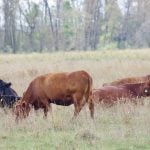This year’s wet spring has seen increased sightings of western water hemlock — one of the most poisonous plants known in cattle production. Prior to 2006, I had only seen one occurrence of this highly toxic plant in 25 years of practice. This year, several multiple plants have been found a great distance apart in



